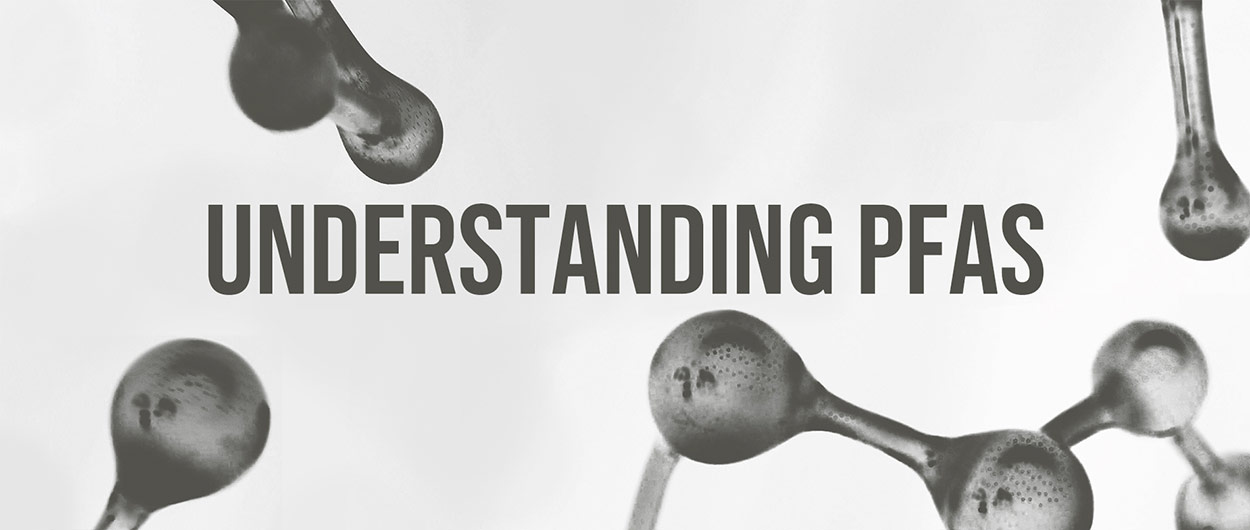
Why You Should Know About Forever Chemicals
You’ve probably heard the buzz about PFAS, better known as ‘Forever Chemicals,’ and wondered, What’s the big deal, and why should I care? The big deal is PFAS are a family of over 10,000 human-made chemicals that don’t break down easily, and they are everywhere, and yes, you should care.
PFAS: They’re Practically Everywhere
PFAS (per- and polyfluoroalkyl substances) have been around since the 1940s and can be found in everything from food wrappers to the air you breathe. These synthetic chemicals are used to make products that resist water, grease, and dirt. Think of those spill-resistant clothes or your favorite non-stick pans; PFAS are behind their magic. Industries rely on PFAS for medical devices, refrigeration systems, electronics, and even construction materials to protect against heat and corrosion.
Unfortunately, PFAS are also in biosolids used as fertilizers, meaning they can end up in our food supply. In general, PFAS have infiltrated our daily lives, and they aren’t going anywhere.
Is PFAS a Health Concern? You Bet.
According to the Johns Hopkins Bloomberg School of Public Health, PFAS are becoming more widespread and may pose serious health risks. In fact, the National Library of Medicine found that 98% of Americans have PFAS in their blood. Here’s why that’s alarming:
- Even low concentrations can affect the reproductive system and fetal development.
- PFAS exposure increases the risk of certain cancers (like kidney and testicular).
- They act as endocrine disruptors, messing with your hormones.
- They can weaken the immune system and reduce children’s response to vaccines.
Why Are They Called “Forever Chemicals”?
PFAS get the nickname “Forever Chemicals” because they hardly break down, building up in our bodies and the environment. According to Canadian toxicologist Elsie Sunderland, PFAS mimic natural fatty acids, confusing the body and causing unintended reactions. Worse still, some PFAS can cross the blood-brain barrier and the placenta, impacting both the brain and developing babies.
How Do PFAS Pollute the Environment?
Thanks to their ultra-strong carbon-fluorine bonds, PFAS can persist for thousands of years. They’re tough to remove from water and soil, and current treatments, like reverse osmosis or activated carbon, are expensive. Even incineration isn’t foolproof as it can release toxic by-products into the air.
Ultimately, PFAS end up in landfills, where they leach into the environment.
Cutting Down Your PFAS Exposure
Although PFAS is ubiquitous at this point, there are ways to reduce your exposure to these forever chemicals. Here’s how:
- Check labels on personal care products and cosmetics for anything containing “fluoro.” Websites like the Environmental Working Group offer ratings to help you choose safer options. Look for “PFAS-free” (not just “PFOA-free”) when buying non-stick cookware or waterproof items.
- If you must use non-stick cookware, cook at lower temperatures, below 400°F or 204°C.
- Filter your drinking water, especially if your local water source is contaminated.
- Check dental floss for PFAS coatings.
- Say no to grease-resistant food packaging (think fast-food wrappers and microwave popcorn bags). Opt for products labeled PFAS-free or other alternatives.
Regulations: What’s Being Done About PFAS?
Regulations vary worldwide, but here’s the current scoop:
- In the U.S., the Environmental Protection Agency (EPA) has a health advisory level for two types of PFAS: PFOA (Perfluorooctanoic) and PFOS (Perflurooctane sulfonate) set at 70 parts per trillion (ppt) though this isn’t enforceable.
- In Canada, the government is actively working to restrict the use, production, and import of certain PFAS. They’re also developing drinking water guidelines and encouraging industries to find safer alternatives.
- In Europe, PFOS has been restricted for more than a decade and was banned since 2020.
- In the UK, the Health and Safety Executive (HSE) and Environmental Agency (EA) were commissioned in 2021 to study and provide recommendations on PFAS chemicals.
Stay Informed, Stay Protected.
PFAS might be here to stay, but being aware of them helps you make smarter choices for yourself and your family. From what you buy to what you drink, small changes can reduce your exposure to these sneaky forever chemicals.
To know more about PFAS, you can get updated information here:
